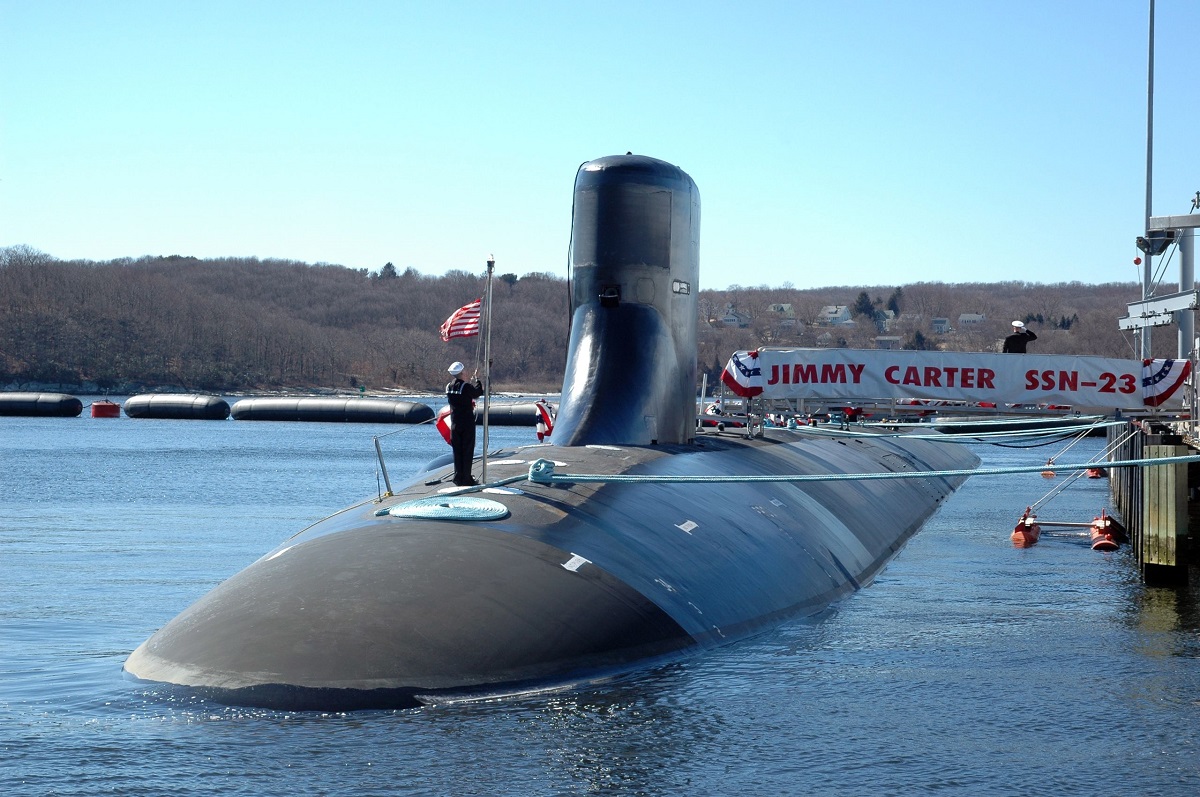$3 Billion Navy Submarine Strikes Underwater Mountain (And Did Not Sink)
Seawolf-class submarines, designed to counter Soviet threats during the Cold War, remain among the most sophisticated in the U.S. Navy’s fleet, but this collision highlighted the dangers of undersea navigation.
What You Need to Know: In October 2021, the USS Connecticut, a Seawolf-class fast-attack submarine, collided with an uncharted seamount in the South China Sea near China's Hainan Island. The incident caused significant damage to the vessel and injured 11 crew members.
-An official U.S. Navy report cited errors in navigation planning and risk management as contributing factors. The Connecticut was conducting surveillance near one of China’s most advanced naval facilities, potentially gathering intelligence.
-Seawolf-class submarines, designed to counter Soviet threats during the Cold War, remain among the most sophisticated in the U.S. Navy’s fleet, but this collision highlighted the dangers of undersea navigation.
How a Seamount Grounded One of the US Navy’s Most Advanced Submarines
As previously reported, it is generally fighter and bomber pilots who need to be concerned with mountains – especially while flying in conditions with low visibility. Yet, it isn't just the "flyboys" who need to watch out for mountains.
In fact, undersea mountains remain a serious threat to submariners, a point noted by Maya Carlin for The National Interest, who explained how the U.S. Navy's Seawolf-class fast attack submarine USS Connecticut (SSN-21) struck an uncharted seamount in the Pacific Ocean in October 2021. It caused significant damage to the boat, while 11 sailors were injured. It resulted in damage to the forward section of the nuclear-powered submarine, including its ballast tank.
While the nuclear reactor and propulsion systems were not affected, the damage was significant enough that the sub was forced to make a week-long voyage on the surface from the South China Sea to Guam, USNI reported in November 2021.
As Carlin offered, the official U.S. Navy report suggested the incident "resulted from an accumulation of errors and omissions in navigation planning, watchteam execution, and risk management that fell far below U.S. Navy standards … Prudent decision-making and adherence to required procedures in any of these three areas could have prevented the grounding."
How Did It Happen – Hard to Miss a Mountain, Even One Underwater!
Mountains are hard to spot even underwater where the visibility isn't as good as on the surface. There are reports that sailors may have detected sonar readings that didn't match with the navigation charts. The issue was that this information wasn't provided to the boat's commanding officer. A failure to send warnings up the chain of command has been a problem throughout time, and the results can be catastrophic. Fortunately, no one lost their lives.
But several questions remains, namely how a mountain was missed and what was the submarine's mission?
The answer to the first question is simple enough. Though such underwater collisions are uncommon because the oceans are vast, it is likely impossible to completely avoid as researchers believe there are more than 100,000 seamounts that rise more than 1,000 meters (about 3,300 feet) from the seafloor according to the National Oceanic and Atmospheric Administration (NOAA). Not all are charted due to the vastness of the world's oceans.
"New estimates suggest that, taken together, seamounts encompass about 28.8 million square kilometers of the Earth's surface," NOAA explained. "That's larger than deserts, tundra, or any other single land-based global habitat on the planet."
In other words, it is hard not to spot a mountain climbing to the clouds, but undersea in less familiar waters a seamount can almost appear out of nowhere, as was the case with USS Connecticut.
Yet, there is a lot more to the story.

Brandon J. Weichert also writing for The National Interest explained that SSN-21 wasn't operating in familiar waters. The boat was in the South China Sea near China's Hainan Island, described as "one of the most sophisticated naval facilities in the world – certainly China's most advanced. It is a surveillance bonanza for the United States to get close to that secretive facility and spy on it."
In other words, USS Connecticut may have been on a sort of sneak-and-peek mission in waters not generally traveled by U.S. submarines. Why the commanding officer wasn't present is an unanswered question – one of many. Whether the U.S. successfully gathered any useful information is another, but what is known is that one of the U.S. Navy's most advanced attack submarines will be sidelined until 2026 or later.
About the Seawolf-class
Designed in the latter stages of the Cold War to address the threat of Soviet ballistic missile submarines, and to replace the aging Los Angeles-class attack submarines, the Seawolf-class of nuclear-powered fast attack submarines (SSN) has been described as the best of the best.
A total of 29 boats were to be constructed over a 10-year period – a number that was first reduced to 12 with only three launched. Cost was a major factor, and the boats also became less necessary with the dissolution of the Soviet Union and the end of the Cold War. It meant they were designed for a foe that no longer existed.
At approximately $3 – $3.5 billion per vessel, the boats were simply too expensive, especially in the wake of changing global geopolitics. Instead, the United States Navy opted for the smaller and more cost-effective Virginia-class submarine program.
Author Experience and Expertise: Peter Suciu
Peter Suciu is a Michigan-based writer. He has contributed to more than four dozen magazines, newspapers, and websites with over 3,200 published pieces over a twenty-year career in journalism. He regularly writes about military hardware, firearms history, cybersecurity, politics, and international affairs. Peter is also a Contributing Writer for Forbes and Clearance Jobs. You can follow him on Twitter: @PeterSuciu. You can email the author: [email protected].
All images are Creative Commons.


